The sun paints the bay of Cap Haitien in Haiti a turquoise canvas, but its brushstrokes are marred by garbage swirling on the surface, littering the embankment, the streets and any other surface. Colonial architecture whispers tales of grandeur, but their echoes reverberate through the cracks and broken stones of yesteryear.
This is not a postcard paradise, but a city in crisis steeped in grief, resilience and heartbreak. Its beauty etched in the face of its struggles. This is the second biggest city in Haiti.
Most of you are thinking, why on earth would anyone go to Haiti especially now? That is a very good point. However, our goal is to visit every country in the world. So we decided that Cap Haitien was a safer choice than the capital, Port Au Prince. Haiti was our 176th country and one of the saddest.
Keep in mind that we have already visited Afghanistan, the Democratic Republic of the Congo and Central African Republic of the Congo just to name a few. So we have seen struggle and heartbreak.
Logistics
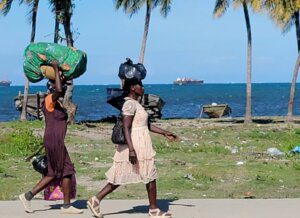
Getting Here
There are many direct flights out of Miami (MIA) to Cap Haitian (CAP). They are run by Sunrise Air and at times they partner with GlobalX a Canadian company. The flight into CAP was less than half full and cheaper than the more expensive flight back to Miami which was full.
Visa
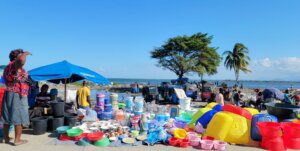
Most countries are visa free. Specifically, there are no visa requirements for Canadian, USA or European citizens. However, there is a $10 entry fee which is paid upon arrival in USD, CAD or EU.
Money
As in most devastated and poor countries, cash is king. Especially the US dollar. The local currency is the Haitian gourde and at time of writing the official exchange was 131 Gourde to 1 USD. However, from some vendors you may be able to get more, say 145 gourde to 1 USD or more. Our recommendation is to just bring small denominations of US dollar bills and use them with most vendors. We do not recommend exchanging USD to Gourde unless you are going deep into the countryside.
Connectivity eSIM/SIM/WIFI
After clearing the customs inspection, there is one counter with a NATCOM sign that sells a local SIM card for $12 USD. It comes with some minutes and 5GB of 4G data. As an experiment we purchased an Aerolo eSIM with 1 Gb of data for $9.50 while still in North America. It worked mostly on LTE or less, especially outside of the city. So we do not recommend this option.
Our hotel had sporadic wifi and only in some areas of the hotel. Therefore, getting the SIM at the airport is the recommended option.
Getting Around
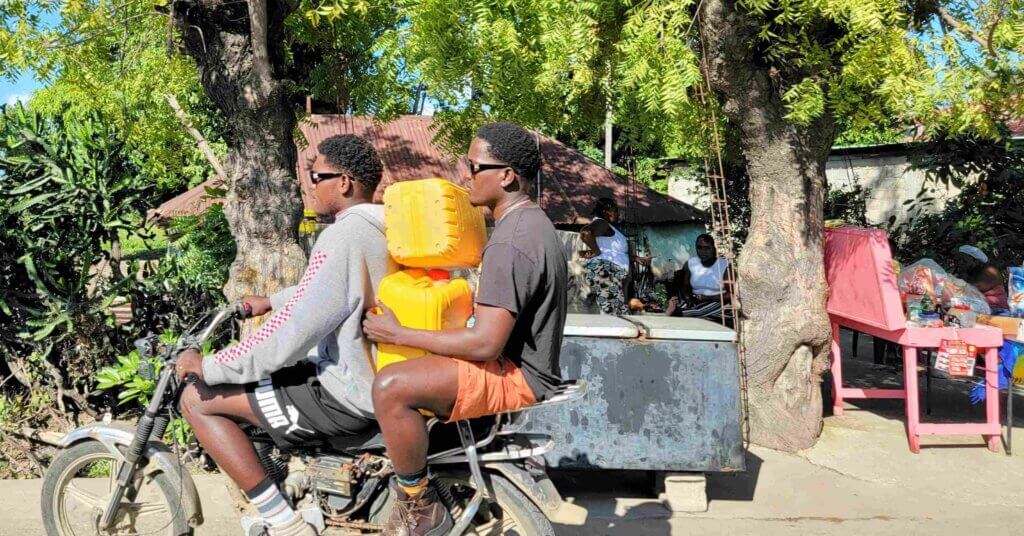
There are taxis, motorcycle taxi’s and tuk tuk’s throughout the city. Pre-arranging a ride to the hotel is highly recommended as we were swarmed by taxi drivers upon arrival. And due to safety issues, paying a bit more through the hotel is a good idea in our opinion. The taxi cost between the Satama Hotel and airport should be $16 – $20 USD.
Most taxi drivers do not speak English, so a bit of French is recommended (although they mostly speak Creole). As always, agree on a price prior to taking the ride.
PRO TIP: The traffic in Cap Haitien is insane. The main Boulevard is mostly dirt road and has no lanes. Traffic flows any which way. If a vehicle breaks down, there is an accident or any other such event, there can be a block for hours. Therefore give yourself plenty of time to get to time sensitive places like the airport.
Accommodations for Cap Haitien
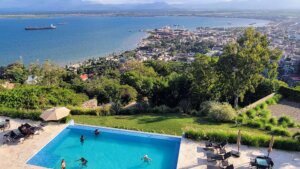
In our opinion there are only 2 real options in CAP to consider for accommodations. One must take into account security first and foremost, then some comforts. However, we really had to temper our expectations as most things that we take for granted in the west are just not available here in Haiti.
Habitation Des Lauriers
The moderately priced, Habitation Des Lauriers is very popular with country counters and budget travelers alike. The prices here range from a budget room for $68 for 2 people to $127 USD for a double superior room for 2 with breakfast. We did not stay here as the place was under renovation and we were concerned about noise and lack of amenities.
Satama Hotel
The Satama Hotel is the best rated hotel in CAP. Given the high ratings on Google, the lack of amenities in the country and safety issues, we decided to pay the price and stay here. The hotel is only a few years old and sits on a hill overlooking the bay. There is a pool and the rooms are modern. However, upon check in we were informed that there will be no hot water in the room and that the hot water has been unavailable for a period of time. That would have been nice to know in advance.
In addition, we were told that the air conditioning system would only function at night. To boot the wifi was sporadic at best and only functioned in some areas of the hotel. The breakfast which was included was very limited. For me as a vegan the only option was the occasional fruit, if it was available.
Rates at the Satama Hotel start at $150 USD for 2 with breakfast.
3 Day Cap Haitien Itinerary & Guide Warning

We had pre-arranged a well rated guide/driver to pick us up from the airport and take us to the Satama Hotel on our first day. On day two the itinerary was to go on a tour of the Citadelle and the Sans Souci Palace. Then we were to return to Cap Haitien and do a City Tour (which to our dismay consisted solely of seeing the Notre Dame Cathedral from the outside). Day 3, we were to be taken to the airport.
The fee was $350 USD. However, the driver did not speak English and there was no guide. Surprisingly, entry fees and additional guiding fees were asked throughout the trip.
Given that we cannot recommend this well rated guide, we will not publish his name or business name. However, if you are visiting Cap Haitien and want to ensure that you are not using him, please do reach out to me and I will confirm his information so that you do not make the same mistake that we did.
Here are the highlights of our tour:
Citadelle Laferrière
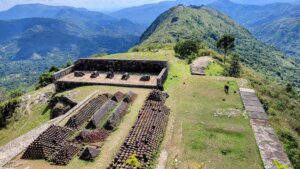
Getting to the Citadelle was a 1.5 hour drive from Satama Hotel. As we approached the town of Milot, the car was surrounded by a group of men. There was an argument and some hand gesturing. After about 5 minutes of sitting in the car unsure of what was happening, one of the men got into the car. He introduced himself as our guide. We asked if he spoke English to which he said a little. We drove for a few more minutes and the “guide” got out and another man got into the car.
This person introduced himself as Nixon, our guide. We asked if he spoke English and he said that he did (Nixon’s English was basic at best). The car turned uphill from the small town of Milot and started the uphill 8 km journey on cobblestones to the parking lot of the Citadelle. From the parking lot you can either take a horse ($10 USD per person) up the rest of the way or walk the 45 minutes.
Given Rob’s horse allergy we decided to walk. The driver stayed with the car and our newly found “guide” Nixon took us up the 45 minute walk. We were joined by Dave (who actually spoke some English) and Kelly who was a 12 year old learning the ropes of guiding. We arrived to the gates of the Citadelle and had to wait for the caretaker to arrive with the keys. The entry fee is $10 USD per person. We were the only people there.
Rising proudly amidst the verdant peaks of Bonnet à l’Eveque, Haiti, the Citadelle Laferrière stands as a monument to human ambition and resistance. Built between 1805 and 1820, this UNESCO World Heritage site is the largest fortress in the Americas, a testament to Haiti’s fierce determination to forge its own destiny after achieving independence from France in 1804.
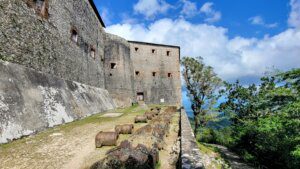
Constructed by 20,000 former slaves under the rule of King Henri Christophe, the Citadelle’s sheer scale is astonishing. Comprised of hulking stone walls, labyrinthine tunnels, and formidable cannons, it was designed to be impregnable, capable of withstanding any potential attack. Its strategic location, 900 meters above sea level, offered panoramic views of the surrounding valleys and coastline, ensuring early warning of approaching enemies.
Inside the fortress, a network of chambers and courtyards reveals the daily life of its inhabitants. From the spartan quarters of the soldiers to the grand cisterns storing precious water, every detail speaks to the Citadelle’s self-sufficiency and resilience.
Though never attacked, the Citadelle served as a powerful symbol of Haitian independence. Its imposing presence sent a clear message to any who dared threaten the fledgling nation. Today, it remains a beacon of Haitian pride, drawing visitors from around the world to marvel at its architectural prowess and historical significance. Climbing to the summit rewards your effort with breathtaking vistas, a truly unforgettable experience.
We walked down from the Citadelle taking a short cut through a technical route. Everyone wanted to be paid and tipped out before we reached the car. Visiting the Citadelle Laferrière was definitely the highlight of our trip.
Sans Souci Palace
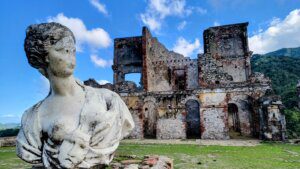
From the Citadelle parking lot we drove a few minutes down and Wilson, our driver let us out at the gates of Sans Souci Palace. Nixon came with us. Unfortunately our eSIM was on H at this point and we could not find any information about the place. Nixon, kept on repeating the same 3 sentences that didn’t make much sense. So I will try to paint you a picture of Sans Souci Palace and attempt to recreate what we saw and learned thereafter:
Imagine a palace kissed by Caribbean sun, a jewel of baroque architecture found amidst rolling Haitian hills. This was Sans Souci Palace, the “carefree” dream of King Henri Christophe, the self-proclaimed Haitian monarch who dared to carve a kingdom from the ashes of colonialism. Built between 1810 and 1813, it was envisioned as a Versailles of the tropics, a testament to Haiti’s newfound independence and Christophe’s audacious vision.
Today, Sans Souci Palace stands as a hauntingly beautiful ruin, a poignant echo of past grandeur. Earthquakes and political turmoil have taken their toll, leaving behind a skeleton of its former magnificence. Yet, in its fractured walls and overgrown gardens, the whispers of a lost era still linger.
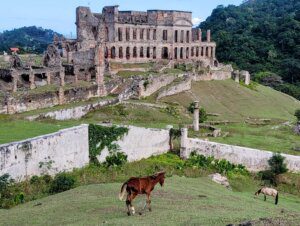
Beyond the palace, wander through the remnants of French-inspired gardens, where fountains once gurgled, beautiful statues stood and exotic flora bloomed. Picture courtiers strolling beneath blossoming trees, seeking solace in this sun-drenched haven.
Visiting Sans Souci is a journey through time, a chance to walk in the footsteps of Haitian self proclaimed royalty. It’s a reminder of the fleeting nature of human ambition and the enduring power of nature. But through the cracks and crumbling masonry, a spark of resilience shines.
In the spirit of its name, Sans Souci invites us to find moments of joy amidst the ruins, to appreciate the beauty that emerges even from decay.
Before we returned to the car, Nixon our self-proclaimed guide who did not speak English well demanded to be paid. We are usually very generous people, but to pay for a self proclaimed guide who jumped into our car on a tour which we paid for handsomely already was a bit difficult. Given that we did not want any trouble we relented. However, we should never have been placed into this situation in the first place.
Notre-Dame of Cap-Haitien Cathedral
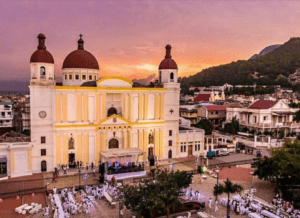
We drove back into Cap Haitien and Wilson attempted to take us to a few very sad and meager souvenir stalls in town. We suggested (in my best possible French) that perhaps the promised City Tour should include the Notre Dame Cathedral. Wilson seemed to understand me and took us there.
Unfortunately the Cathedral was closed and so we walked around it, peeking into windows and doors wherever we could. Since Wilson could not provide context, we were busy Googling to get as much information as possible. This is what we learned and saw:
Overlooking the frenetic streets of Cap-Haitien, Notre-Dame Cathedral stands tall and imposing, its pastel facade and bell tower a familiar landmark. Sunlight washes over the weathered stone, casting long shadows on the worn steps leading to the entrance. We managed to peek inside through the windows and colorful mosaics to see a typical Catholic Cathedral with pews and statues.
The Cathedral was built in 1670 during the French colonial rule. Today it stands as a testament to that era’s presence in the Caribbean. Notably, the liberation of slaves was proclaimed in the cathedral’s square on August 29, 1793. The building weathered an earthquake in 1842 and underwent significant renovations in 1942.
Beyond its historical significance, Notre-Dame remains a vital part of the Cap-Haitien community. On Sundays, the pews fill with parishioners and the Cathedral offers a sense of community.
The rest of the city was so devastated and warn that Wilson chose to drive us back to the hotel.
Wrap Up
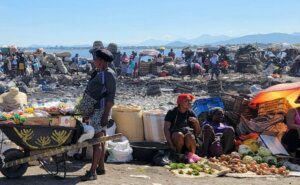
Haiti is not a country you choose to go to without a purpose. For us it was our 176th country visited. For others it may be the thrill of visiting the most dangerous country, or visiting family and or friends.
I asked Wilson, our driver, if life in Cap Haitien was difficult? Perhaps he didn’t understand me or didn’t have context or perspective, but he said that it wasn’t. He said that it was a good life. However, what we saw on the streets, the abject poverty, the endless piles of garbage, the lack of sanitation or potable water it all seemed dire and hopeless.
During our trip, we discovered the hotel and the tour group that we cannot recommend. But we also saw the beauty in the Citadelle, the Sans Souci Palace and the unforgettable view of the bay and the Notre Dame Cathedral at sunrise and sunset from the hilltop.
We really hope that the 1,000 Kenyan police officers that are being sent to help restore some sense of normalcy to the life of regular Haitian’s happens quickly and is effective in restoring peace.
Have you been to Haiti or any of the other most dangerous countries in the world? What was your experience? We would love to hear from you in the comments.

